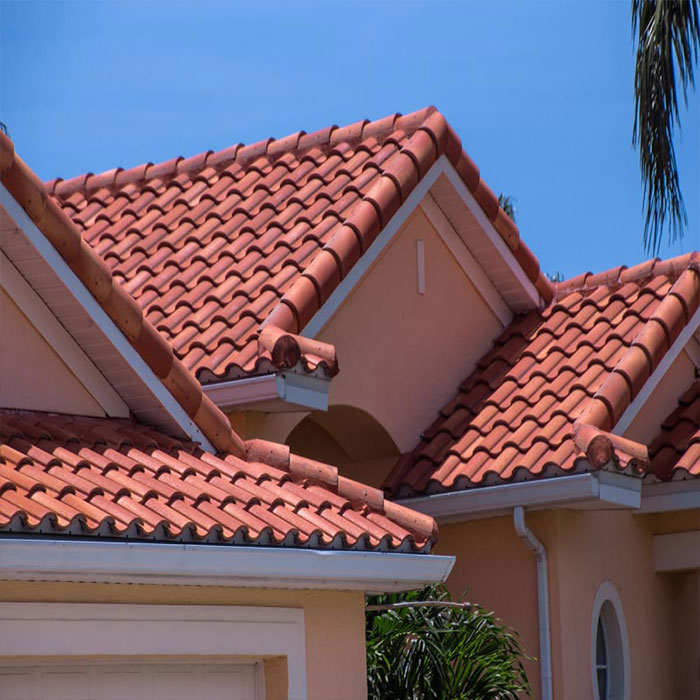


Mangalore tile roofing contractors in Chennai are specialized professionals who excel in the installation, repair, and maintenance of Mangalore roofing contractors in Chennai. These contractors play a crucial role in preserving the traditional charm and durability of these distinctive roof systems. Mangalore tile roofs are renowned for their ability to withstand harsh weather conditions, and roofing contractors with expertise in this niche field are essential to ensure the long-lasting protection of homes and buildings.
Mangalore tile roofing contractors in kanchipuram are iconic and renowned for their distinctive design and red clay material. These Mangalore tile roofing contractors in kanchipuram originate from the coastal city of Mangalore in India and have been used for centuries due to their natural strength and excellent heat and moisture resistance. Mangalore roofing contractors in kanchipuram are preferred by architects and homeowners who appreciate their rustic elegance and functional benefits, as they provide an efficient way to keep homes cool in hot climates.
The design and price of Mangalore roofing contractors in kanchipuram can vary significantly based on factors such as tile style, quality, quantity, and the complexity of the design. While these tiles are valued for their aesthetic appeal and durability, potential buyers should be aware that intricate designs or custom patterns can increase the overall cost. It's essential to consult with roofing experts and obtain quotes to determine the specific design and price that suits your project's requirements.
Mangalore tile roofing contractors in thiruvallur involves the use of Mangalore roof tiles to create durable and aesthetically pleasing sheds or other roofing structures. These Mangalore tile roofing contractors in thiruvallur can serve various purposes, from protecting outdoor spaces to adding an elegant touch to architectural designs. The construction process requires skilled labor and knowledge of Mangalore tile roofing techniques to ensure structural integrity and aesthetic appeal.
Mangalore roofing contractors in thiruvallur sheets are a modern adaptation of traditional Mangalore roof tiles. These sheets provide the same aesthetic appeal and durability as individual tiles but offer faster installation due to their larger size. They are an excellent choice for roofing large areas with the same classic Mangalore look.
The price of Mangalore tile roofing contractors in Vellore sheets varies based on factors such as the sheet's size, quality, and quantity required. While these sheets offer cost-effective solutions for large Mangalore tile roofing contractors in Vellore projects, the price can fluctuate depending on specific project requirements. Obtaining quotes from suppliers and contractors is essential to determine the price that aligns with your budget and project needs.
Mangalore roofing contractors in Pondicherry designs are characterized by their classic, terracotta appearance and distinctive shapes. These designs can vary from the traditional S-shaped tiles to flat and interlocking profiles. The choice of design can impact the Mangalore tile roofing contractors in Pondicherry aesthetics and functionality, making it essential to select the one that complements the overall architectural style and climatic conditions of the region.
The texture of Mangalore roofing contractors in mahabalipuram is notable for its natural, earthy feel. These tiles often feature a rough, sand-like texture, which not only adds to their visual appeal but also enhances their ability to regulate temperature and provide effective insulation. The unique texture of Mangalore tile roofing contractors in mahabalipuram contributes to their popularity in regions with hot and humid climates, as they help keep interiors cool and comfortable.
Mangalore roofing contractors in Tamil Nadu are the most established and the most famous tiles top pick since ages on account of their nostalgic and suggestive use in legacy buildings and the unconventional pattern. Numerous a magical constructions can be made by utilizing this adaptable Mangalore tile roofing contractors in Tamil Nadu with channels and points by creating in steel. In prior occasions the wood was utilized for this reason. Be that as it may, as the time passed the expense of the wood became increased and the flexibility and the accessibility of the steel manufacture increased. So steel turned out to be more famous than the wooden rooftop purling. Still the superior works are done in the wood.
Since they are made of clay, Mangalore roofing contractors in Tindivanam help to direct the flow of electrical energy inside a building. In case of abrupt electrical floods, they are particularly helpful in padding the normal effects on the building. They additionally help to save costs that would somehow be used on energy utilization, as by their protection limit, they keep energy utilization inside check in Mangalore tile roofing contractors in Tindivanam.
Because of the material they are made of, they have next to no or no negative consequence on the environment and represent no danger to the ordinary flow of ecological activities inside the environment.
Mangalore roofing contractors in ECR are generally cheap to create (as their significant raw material can be found in most beach front social orders and don't need any genuine chemical processing) which means their price tag is additionally low when contrasted with other Mangalore tile roofing contractors in ECR materials.
Likewise, Mangalore roofing contractors in OMR offer your money’s worth: they are just about as strong as can most recent a century and more which means you don't need to replace them at any point in the near future.
They are not combustible and consequently offer great insurance for buildings in case of fire accidents. They are likewise phenomenal decisions in the roofing of places like ovens and purifier houses where fire is for the most part in constant use and that at incredibly high temperatures.
Mangalore tile roofing contractors in OMR likewise help to relieve the effect of extreme rise or fall in temperature in a building. They are generally fired at around 42°C to 47°C which means they can ingest high levels of heat and cold the same. This helps with keeping up sound room temperature inside the structure and furthermore lessen the effect of exercises inside the building that require extraordinary temperature levels on the outward environment.